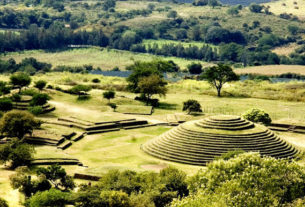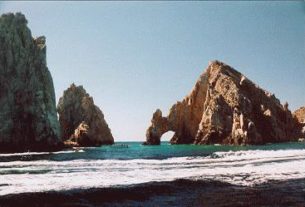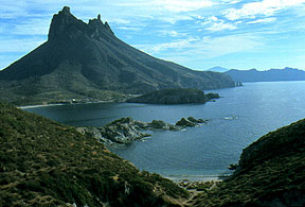The term ” corregidor” is normally associated with an island in the Philippines that witnessed one of the most dramatic and tragic episodes of the Second World War — when a starving, outgunned, and outnumbered band of American and Filipino soldiers finally surrendered to a Japanese invasion force after heroic but futile resistance.
But how did it come to acquire such a name, which — quite literally — means “corrector” in Spanish? The term, it should be noted, referred less to someone who teaches wayward people to cultivate the paths of rectitude than it did to a magistrate in colonial Spain. The Spaniards were the dominant presence in Philippines between the 1560s, when they began to colonize the islands, and 1898, when control passed over to the United States in the wake of the Spanish-American War.
With a rule that lasted over three centuries, the Spaniards had a chance to appoint many corregidores — and it is completely logical than an isle in that extensive island chain should bear such a name.
Corregidores were scattered throughout the Spanish domains including, of course, Mexico. One such official was Miguel Domínguez, who exercised that function in Querétaro. But the focus here is not on the corregidor but on his wife, who bore the title of corregidora. As we shall see, this was truly a case where a wife not only wore the pants in the family but where her determination, resourcefulness and drive were able to change history.
Josefa Ortiz was born in Valladolid (today Morelia) in 1768. Her parents, Juan José Ortiz and Manuela Girón de Ortiz, died shortly after her birth and the little girl was brought up by an older sister. She was educated at the prestigious Colegio de las Vizcainas, from which she graduated in 1791. In that same year she married Miguel Domínguez. The young couple went to live in Querétaro, where her husband exercised his functions. In view of the role Querétaro would play in the independence movement, this truly proved a case of being in the right place at the right time.
On both sides of her family, Josefa was of pure Spanish ancestry. But this fact did not breed affection for the mother country. Like many members of the creole elite into which she was born, Josefa was highly antagonistic toward the gachupínes (Spaniards born in Spain). This hostility was based on the arrogant attitude that so many of them displayed toward the creoles. ” Gachupines” literally means “spurs” and the nickname obviously derived from what the creoles perceived as the Spaniards’ goading tactics.
Josefa’s anti-Spanish attitude was also related to her intellectual development. It was the custom in those days for privileged creoles to organize literary societies, at which such works banned by the Church as those of Voltaire, Rousseau and Descartes were smuggled in to form the basis of lively discussion.
These literary societies soon became political societies. Of these, the most important was in Querétaro. Its leading figure was a young army captain named Ignacio Allende. The intellectual ties that Josefa had with this literary-political circle was strengthened by the fact that one of her daughters became engaged to Allende. More committed to the independence movement than her husband, she nonetheless worked on him until he became at least a closet supporter of the separatist cause.
On the eve of the independence war, it was feared that the rebels had hidden a quantity of arms and supplies in Querétaro. Moreover, some of their leaders were hiding in the city — including Allende and Miguel Hidalgo himself. Unaware of the corregidora’s true sympathies, the colonial authorities ordered him to institute a house search. He was also ordered to lock up his wife since her pro-independence sympathies were well-known.
But the king’s men had not reckoned with Josefa’s resourcefulness. The town was honeycombed with rebel sympathizers and one of them was the alcalde, or mayor. The corregidora managed to get a message to him which he relayed to the hidden rebel leaders. All escaped and lived to initiate the rising against Spain.
Josefa paid dearly for this patriotic deed. Betrayed by a Captain Arias, she was first confined to the Santa Clara convent in Querétaro and then transferred to Mexico City for trial. Her husband defended her but his forensic powers failed to secure an acquittal. Found guilty, she was confined to another religious institution, the convent of Santa Teresa. So outspoken was the corregidora in denouncing her captors that she was transferred to yet another nunnery, Santa Catalina de Siena, where discipline was stricter. She was not released until the Independence War ended in 1821.
Josefa’s opposition to unjust authority was not limited to European imperialism. Though defiant of Spanish royal authority, she was proud of her Spanish blood and bitterly condemned Guadalupe Victoria, Mexico’s first president, when he expelled all Spaniards from Mexico. Earlier on she had contemptuously refused to be a lady of honor in the court of the puffed up adventurer, Iturbide, who grandiosely styled himself Agustín I, Emperor of Mexico. She also refused to accept any remuneration for the services she had rendered the liberation movement.
Josefa Ortiz de Domínguez died in 1829, at the age of 61. She was first buried at Santa Catalina but her remains were later shipped to her home city of Querétaro. There the state congress declared her benemérita (meritorious). She was also honored in Mexico City, where a statue stands in a plaza that bears her name.
For her independent spirit, for the subtle but decisive influence she exercised on her husband, and for her hatred of all forms of oppression, Josefa Ortiz de Domínguez was as much a symbol of Mexican emancipation as any of her male colleagues in the freedom struggle.



